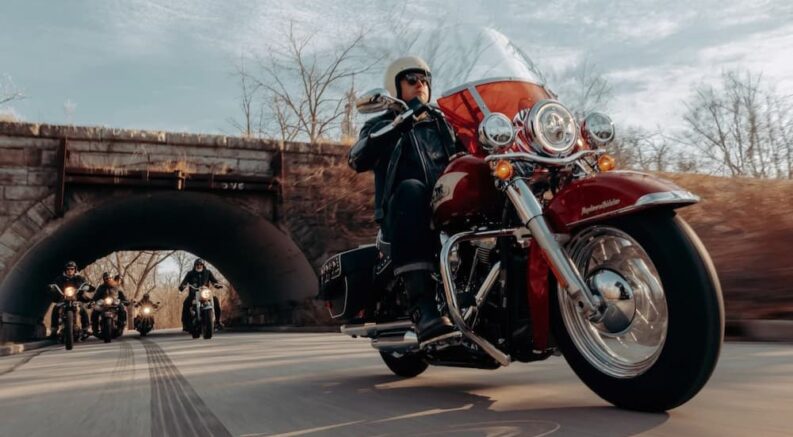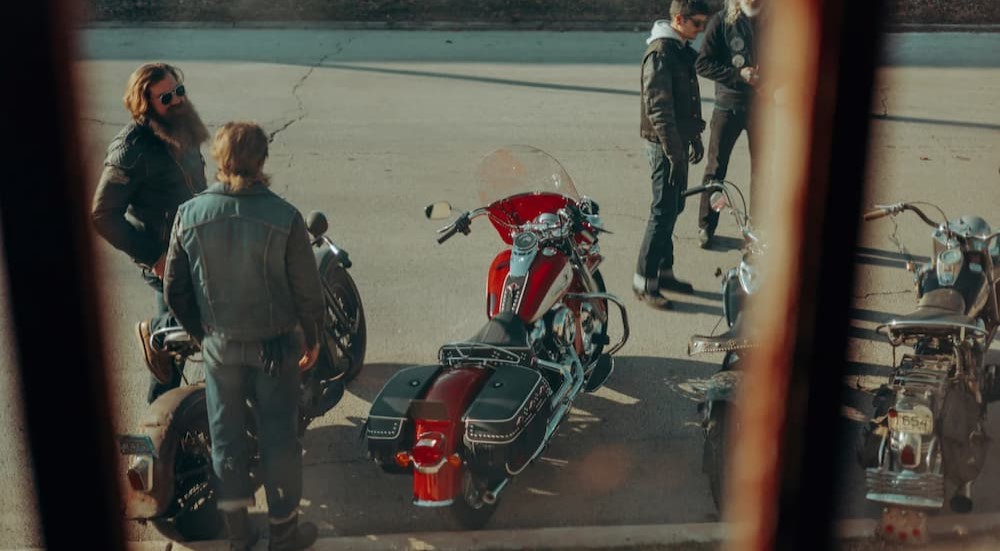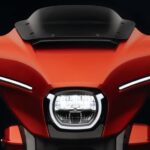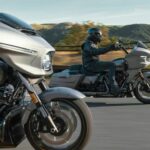The year 2024 marks the 75th anniversary of the original Harley-Davidson Hydra-Glide, one of the most revered bikes from one of the most revered American motorcycle manufacturers. To celebrate the occasion, your local Harley-Davidson dealer may have something special in store. With the limited-edition 2024 Harley-Davidson Hydra-Glide Revival, riders have a chance to experience the original Panhead motorcycle that captivated the post-WWII crowd.
The Hydra-Glide Revival is part of the annual Icons Motorcycle Collection that puts a modern spin on a famous motorcycle of the past. Although the original Hydra-Glide was only made for eight years, it is still worshiped by those who know motorcycles, and its impact resonates to this day. How does this one-year-only edition of the Hydra-Glide Revival carry on the legacy? Today, we’re looking at the Hydra-Glide’s glorious past and seeing what the newest Hydra-Glide brings riders on the diamond anniversary.
The History of the Hydra-Glide: A Harley-Davidson Legend
Thanks in part to the use of the WLA, now widely considered the predecessor of the touring bagger, in World War II, Harley-Davidson was well on its way to becoming the premier American motorcycle manufacturer by the mid-1940s. Models such as the FL, introduced in 1941 with an early Knucklehead V-twin engine, were grabbing hold of riders who were back from the war and ready for a less dangerous adventure.
However, the chassis was still based on the girder fork, a design that dated back to World War I. Combined with a hardtail wishbone frame, these motorcycles rode more like vintage bikes, even for their time. With other manufacturers developing versions of the hydraulic telescoping fork, which debuted in the late 1930s and offered a far smoother ride and a more visually appealing look, Harley-Davidson decided they needed to get on the train before losing the crown.
Harley-Davidson came up with its take on the new fork soon after WWII ended. However, due to a combination of needing to ramp up production for telescoping forks and selling off the remaining girder forks, the suspension design didn’t debut until 1949. When it did, it came on all four motorcycles that had a Big Twin engine: the FL, F, EL, and E. Featuring more than five inches of travel, helical springs, and a hinged saddle, it was a major revamp in terms of handling and ride quality.
The previous year, the FL had received another huge upgrade, switching from the Knucklehead to the Panhead engine. This 74-cubic-inch powerplant had cast aluminum heads, a new oil pump, a rocker/valve spring cover, and other modifications to stand up to the longer rides and faster speeds riders wanted. The year after this one-two punch, Harley-Davidson started giving its bikes actual names instead of just model designations. Combining the hydraulic telescoping fork and the engine that allowed for cross-country journeys, the name was clear: the Hydra-Glide.
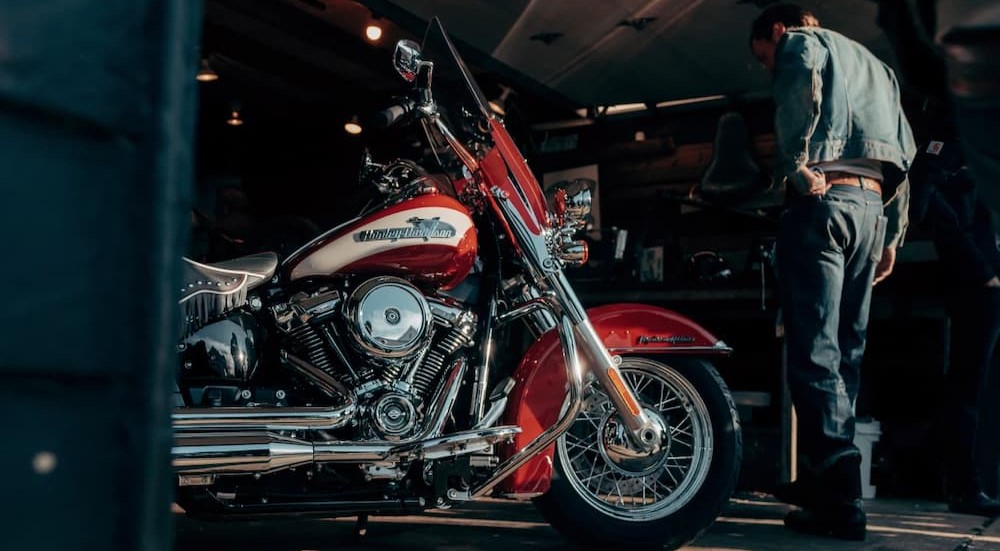
What Happened to the Hydra-Glide?
Over the coming years, Harley-Davidson continued to improve the Hydra-Glide and make it even more rider-friendly. In 1952, Harley-Davidson offered a foot shifter and hand clutch configuration that reversed the traditional setup. The following year, an oil filter assembly became standard, and in 1954, they replaced the hardtail frame with a straight leg frame. Hard plastic saddlebags became an optional replacement for the standard soft leather bags.
The most famous change of all was the addition of the FL Hot, or FLH, in 1955. This souped-up Hydra-Glide increased from 50 to 55 horsepower thanks to higher compression and an updated crankshaft. It could now reach 110 mph, a new high mark for a Harley-Davidson bagger. As all this was happening, Harley-Davidson discontinued the other three Big Twins, leaving the Hydra-Glide standing alone.
In the end, further design advances killed the Hydra-Glide. For 1958, Harley-Davidson completely overhauled the frame of the FL/FLH, adding a rear swingarm and a coilover suspension to the now-proven front telescoping fork. With this change, Harley-Davidson decided a new name was in order, and the FL became the Duo-Glide. Just like that, the Hydra-Glide was now more, at least until now.
The Hydra-Glide Revival: Honoring the Past With Contemporary Performance
We were stoked when we heard the Hydra-Glide was coming back, even for a limited run. At the same time, we wondered what such a resurrection would look like. The short answer is that if you want a motorcycle that offers the precision riding of the 2020s and the visual style of the 1950s, the 2024 Hydra-Glide Revival is your kind of bike.
The new Hydra-Glide is based on the 2024 Heritage Classic, Harley-Davidson’s cruiser that pays tribute to the past. This means a Milwaukee-Eight 114 V-Twin, which also powers the Road Glide and Street Glide, is the bike’s heartbeat. Introduced in 2016 as the ninth generation of the Big Twin, it’s a fitting successor to the Panhead. This version is counterbalanced and carries a high-flow air cleaner, giving riders 94 hp and an estimated 47 MPG. One way it defies the early FL is its relative lightness. It weighs less than 750 lbs, ready to run. That’s 52 lbs lighter than the 2024 Road Glide, which itself is 16 lbs lighter than the 2023 model.
As for the bike itself, the Hydra-Glide is built on the company’s Softail chassis. Harley developed this frame in the early 1980s for riders who wanted the look of the vintage hardtail frame and the comfort of the swingarm chassis. Considering the Hydra-Glide began with the hardtail and ended with the swingarm, again, it’s an appropriate choice. The tried-and-true telescoping fork is still around, though now sporting aluminum clamps. It uses a lowered rear mono-shock with adjustable preload.
Together with the engine, you have the most powerful, efficient, and cozy way to ride from coast to coast, just like the original Hydra-Glide. Though rider technology was a glint in the Hydra-Glide’s eye, Harley-Davidson has recognized the need for it on the Revival with additions like all-LED lighting, cruise control, and anti-lock brakes that 1950s tours would likely have lusted over.
Mid-Century Style Reborn
All this lies beneath a bike that looks straight out of the Easy Rider era. The 2024 Hydra-Glide Revival has a “shorty” dual exhaust, steel-laced chrome wheels and trim, and a color-matched period windshield. The two-tone red and white finish is based on the famous 1956 Hydra-Glide FLH, as are the embellished solo seat and saddlebags.
Want to feel the full wind blast in your face like riders would have 75 years ago? Go for it — the windshield is detachable. The speedometer’s look is based on the 1954-55 Hydra-Glide, and the saddlebags are covered in leather to reflect the early models (though these saddlebags are weather-resistant and lockable for modern convenience). It even comes with the “beer can” front fork covers that the early telescoping forks were known for, a final touch of classic vibes.
A Modern Way to Glide Down the Highway
Everything about the 2024 Hydra-Glide Revival reflects the carefree attitude and bold post-war spirit that infused the bikes of 1949-57, built on a foundation that can provide many years of 21st-century joy. It’s a bike for those who have an old soul or have heard countless stories from parents and grandparents about the Hydra-Glide and are ready to see why it’s maintained a place in rider’s hearts.
Remember, though, motorcycles in the Icons Collection are only offered for one year before they’re gone again. Harley-Davidson has also stated it will cap production at 1,750 bikes, each with a unique serial number. If the 2024 Harley-Davidson Hydra-Glide Revival is something that excites you as much as us, you’d better get to a dealer quickly before they’re all gone.

